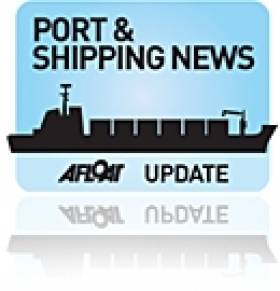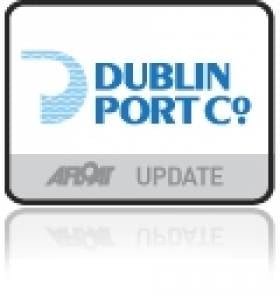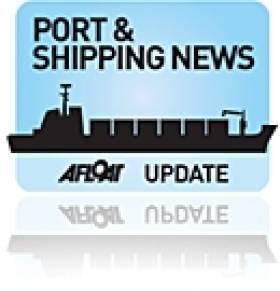Displaying items by tag: Iarnrod Eireann
Big Plans for Rosslare Europort
Ambitious plans to introduce load-on load-off (Lo-Lo) facilities at Rosslare Europort have been announced, according to a report in yesterday's Wexford People.
However, to facilitate all these developments, Mr Lynch said they will need the reclamation of up to 20 hectares of additional land and the deepening of part, or all, of the port from the current 7.2m to 9m and perhaps, eventually, 11m.
Mr Lynch said these developments would be facilitated, and accelerated, by of a port centric logistics zone (a grouping of activities dealing with freight transportation) on lands beside the south-eastern port.
Mr Breen said he recognises the 'fundamental and strategic importance of Rosslare Europort to the economic development of the county'.
The county manager said he will recommend that 'appropriate policies, objectives and development management standards are included in the draft plan to facilitate the development of the port', subject to the appropriate technical and environmental assessments.
As part of his submission, Mr Lynch also requested that the '1902 Lighthouse' at the port, which is recognised on the National Inventory of Architectural Services, not be included on the Record of Protected Structures.
Mr Breen said he would give further consideration as to whether it would be appropriate to de-list the lighthouse in advance of the draft plan.
Next month the port will host the annual Irish Ports Conference in the Ferrycarrig Hotel, Wexford on Friday 30 September.
- Rosslare Europort
- Ports and Shipping News
- Irish Rail
- Iarnrod Eireann
- Ferry news
- Rosslare Harbour
- Irish Ports Conference
- Irish Ports Association
- Ferrycarrig Hotel
- Railfreight
- Port Development
- National Inventory of Architectural Services
- Record of Protected Structures
- Irish Lighthouses
- Lighthouses of Ireland news
New €1.5m Rail-Spur for Dublin Port
The minister welcomed "the important investment by Dublin Port Company in its rail network. It will further enhance the attractiveness of the port as a destination for rail-based freight. The project represents a commitment on the part of Dublin Port Company and Iarnród Éireann to customers who want to move goods by rail".
The project took six months to complete and the public private partnership involved Dublin Port Company, Iarnród Éireann and the first customer of the new facility, International Warehousing and Transport (IWT).
IWT is a privately owned Irish logistics company, which already operates freight-trains to Ballina that are expected to increase from 4 to 5 trains per week in each direction as a result of this investment. The rail-operator believes that the service will save up to 5.5million road kilometres annually and reduce CO2 emissions by up to 2,750 tonnes.
The Irish Exporters Association also welcomed the development of the IWT freight operation at the new facility, where increased frequency in services will enhance Ireland's contribution to the European Union's modal shift aspirations from road to rail.
The Common User Terminal is also open to other shipping companies. Existing clients using the lo-lo container terminal operated by Burke Shipping Group through its subsidiary Portroe Stevedores are C2C Lines, APL, Coastal Containers, Evergreen, Gracechurch and OOCL . The terminal also has a ro-ro berth facility where CLdN /Cobelfret operate from on routes to Belgium and The Netherlands.
In addition to the Dublin-Ballina service the port exports 400,000 tonnes of lead and zinc concentrate from the freight customers Boliden/Tara Mines with 15 trains per week. The facility at Alexandra Basin Jetty is regularly served by vessels from Arklow Shipping Ltd, where the 2011 newbuild Arklow Field (2,998 tonnes) is currently berthed.
- Dublin Port
- Dublin Port Company
- Arklow Shipping Ltd
- Irish Exporters Association
- Port of Dublin
- Ports and Shipping News
- IEA
- Minister for Transport
- Ocean Pier
- Irish Rail
- Iarnrod Eireann
- Portroe Stevedores
- Dublin Port news
- IWT
- ASL
- Leo Varadkar T.D.
- Port of Dublin news
- Railfreight
- International Warehousing and Transport
- Alexandra Basin East
- Common User Terminal
- Burke Shipping Group
- Clnd Cobelfret
- Boliden
- Tara Mines
- Arklow Field
- Dublin Shipping
- Lead mines
- Zinc mines
- Irish Railways
- Dublin Port railhead
New Rail-Head Extension for Dublin Port
The Dublin Port Company has approved for the railway extension of the existing track tramway on Alexandra Road in order to serve one of the port's Lo-Lo container terminals, writes Jehan Ashmore.
The new extension is to directly connect rail-freight trains to the Common User Container Terminal at Alexandra Quay East. The extension will make a right turn off the Alexandra Road immediately after the Tara Mines zinc unloading facility and then along the quayside to the terminal, close to Ocean Pier.
Currently there are three weekly rail-freight trains running between Ballina, Co. Mayo and Dublin port, where the containers are required to be loaded and unloaded on Alexandra Road. From this location they are transferred by road to the terminal. When the new rail-tramway is completed in April, this will reduce costs by eliminating the transfer.
The rail-freight service to Dublin Port started operations in August 2009 and is run as a public private partnership between International Warehousing & Transport (IWT), Iarnrod Eireann and Dublin Port. IWT is the only train operator to the port, but it is believed that the Dublin Port Company has received a number of enquiries from other port users who are interested in using the new facility.
IWT are also agents for Tschudi Shipping and Tschudi Logistics on services to the Belgium, The Netherlands, Scandinavia and the Baltic Sea which use the Common User Container Terminal. The terminal is operated by the Burke Shipping Group through its subsidiary Portroe Stevedores. Other clients using the terminal are Cobelfret, C2C Lines, APL, Coastal Containers, Evergreen, Gracechurch and OOCL.
In addition to the terminal, the port operates two other container facilities at the Dublin Ferryport Terminal (DFT) and the Marine Terminals Ltd (MTL). According to figures released yesterday, Dublin Port recorded growth in Lo-Lo container volumes by 1.1% with an outturn of 554,259 TEU in 2010.
Dublin Port's position as the island's largest Lo-Lo (unitised) port was reinforced by the rail-freight services to Ballina. According to IWT the service on an annual basis saves up to 5.5m road kilometres and CO2 emissions are reduced by as much as 2,750 tonnes. In addition the service removes up to 10,000 trucks away from the roads.
The Common User Container Terminal is also a multi-model terminal, as Ro-Ro traffic started in 2009 with the installation of a new ramp at berth 36/37 at Ocean Pier, Alexandra Basin East. In 2010 the port recorded Ro-Ro freight units increase by 12.8% to 725,665 which is less than 1% down from the port's highest ever throughput.
Ro-Ro growth in 2010 was driven in part by the new CLdN /Cobelfret Ro-Ro services to Zeebrugge and Rotterdam. CLdN's ro-ro Yasmine made a recent first-time visit to the port followed by the newest vessel of the Belgium owned fleet, Amandine (see photo) the last of six con-ro newbuilds, which too made an inaugural visit to the port. The 195-m vessel departed from the upgraded ramp at Ocean Pier yesterday bound for Rotterdam.
For further port traffic figures which showed an overall increase in the port's volumes of 6.1% in 2010, logon here































































